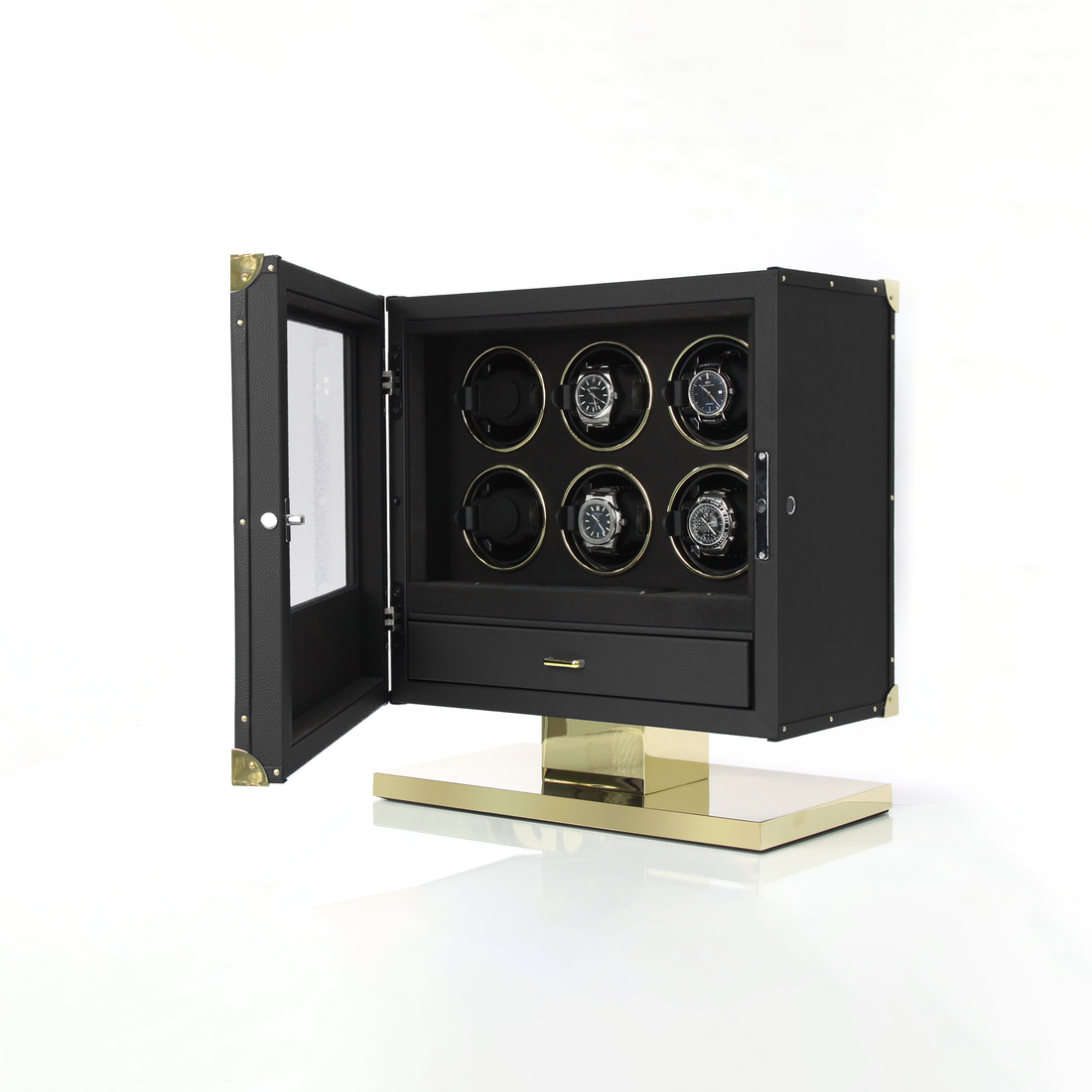

Want to make sure your automatic watch is always ready to wear?
Explore our handcrafted watch winders below, designed to maintain performance without overwinding.
-
Monarion 6 Watch Winder
Regular price HK$13,206.00Regular priceUnit price / perHK$16,402.00Sale price HK$13,206.00Sale -
Tarnedon Watch Winder Safe
Regular price From HK$46,096.00Regular priceUnit price / perHK$51,566.00Sale price From HK$46,096.00Sale -
Zenirra 8 Watch Winder
Regular price HK$11,722.00Regular priceUnit price / perHK$18,747.00Sale price HK$11,722.00Sale -
Zenirra 6 Watch Winder
Regular price HK$8,440.00Regular priceUnit price / perHK$15,621.00Sale price HK$8,440.00Sale -
Zenirra 2 Watch Winder
Regular price HK$6,174.00Regular priceUnit price / perHK$7,807.00Sale price HK$6,174.00Sale -
Eiffrelia 12 Watch Winder
Regular price HK$19,458.00Regular priceUnit price / perHK$22,661.00Sale price HK$19,458.00Sale -
Lignarose 24 Watch Winder
Regular price HK$27,326.00Regular priceUnit price / perHK$30,476.00Sale price HK$27,326.00Sale -
Lignarose 12 Watch Winder
Regular price HK$18,676.00Regular priceUnit price / perHK$22,661.00Sale price HK$18,676.00Sale -
Lignarose 9 Watch Winder
Regular price HK$14,433.00Regular priceUnit price / perHK$17,113.00Sale price HK$14,433.00Sale -
Lignarose 6 Watch Winder
Regular price HK$11,643.00Regular priceUnit price / perHK$14,847.00Sale price HK$11,643.00Sale -
Lignarose 4 Watch Winder
Regular price HK$8,760.00Regular priceUnit price / perHK$10,940.00Sale price HK$8,760.00Sale -
Lignarose 2 Watch Winder
Regular price HK$6,408.00Regular priceUnit price / perHK$7,815.00Sale price HK$6,408.00Sale -
Tempraxis 24 Watch Winder
Regular price HK$33,445.00Regular priceUnit price / perHK$38,290.00Sale price HK$33,445.00Sale -
Tempraxis 12 Watch Winder
Regular price HK$21,099.00Regular priceUnit price / perHK$23,443.00Sale price HK$21,099.00Sale -
Tempraxis 9 Watch Winder
Regular price HK$16,254.00Regular priceUnit price / perHK$18,754.00Sale price HK$16,254.00Sale -
Tempraxis 6 Watch Winder
Regular price HK$13,284.00Regular priceUnit price / perHK$15,629.00Sale price HK$13,284.00Sale -
Tempraxis 4 Watch Winder
Regular price HK$10,526.00Regular priceUnit price / perHK$12,503.00Sale price HK$10,526.00Sale -
Tempraxis 2 Watch Winder
Regular price HK$7,268.00Regular priceUnit price / perHK$8,596.00Sale price HK$7,268.00Sale -
Monarion 12 Watch Winder
Regular price HK$19,536.00Regular priceUnit price / perHK$22,661.00Sale price HK$19,536.00Sale -
Cubetouris Classic Single Watch Winder
Regular price HK$2,579.00Regular priceUnit price / perHK$3,360.00Sale price HK$2,579.00Sale -
Cubetouris Sport Single Watch Winder
Regular price HK$2,579.00Regular priceUnit price / perHK$3,360.00Sale price HK$2,579.00Sale
1
/
of
21












































